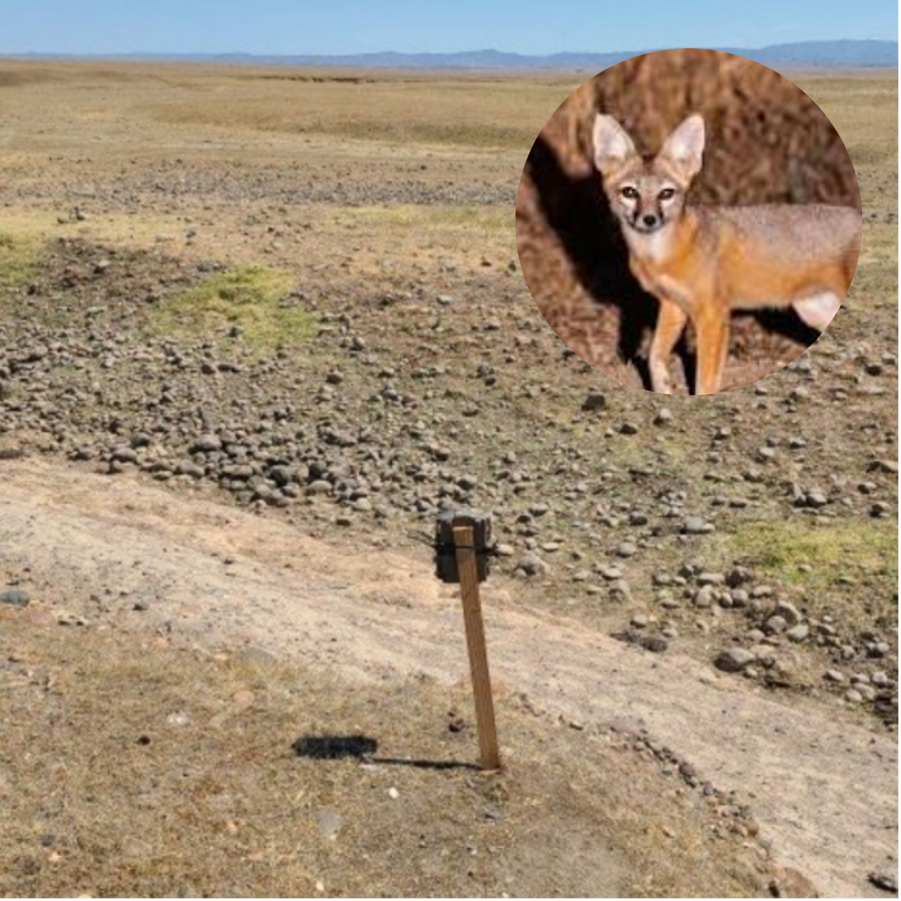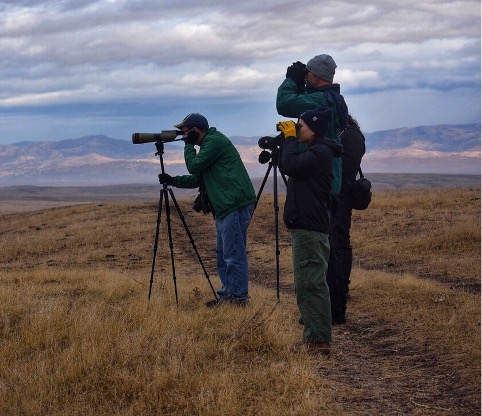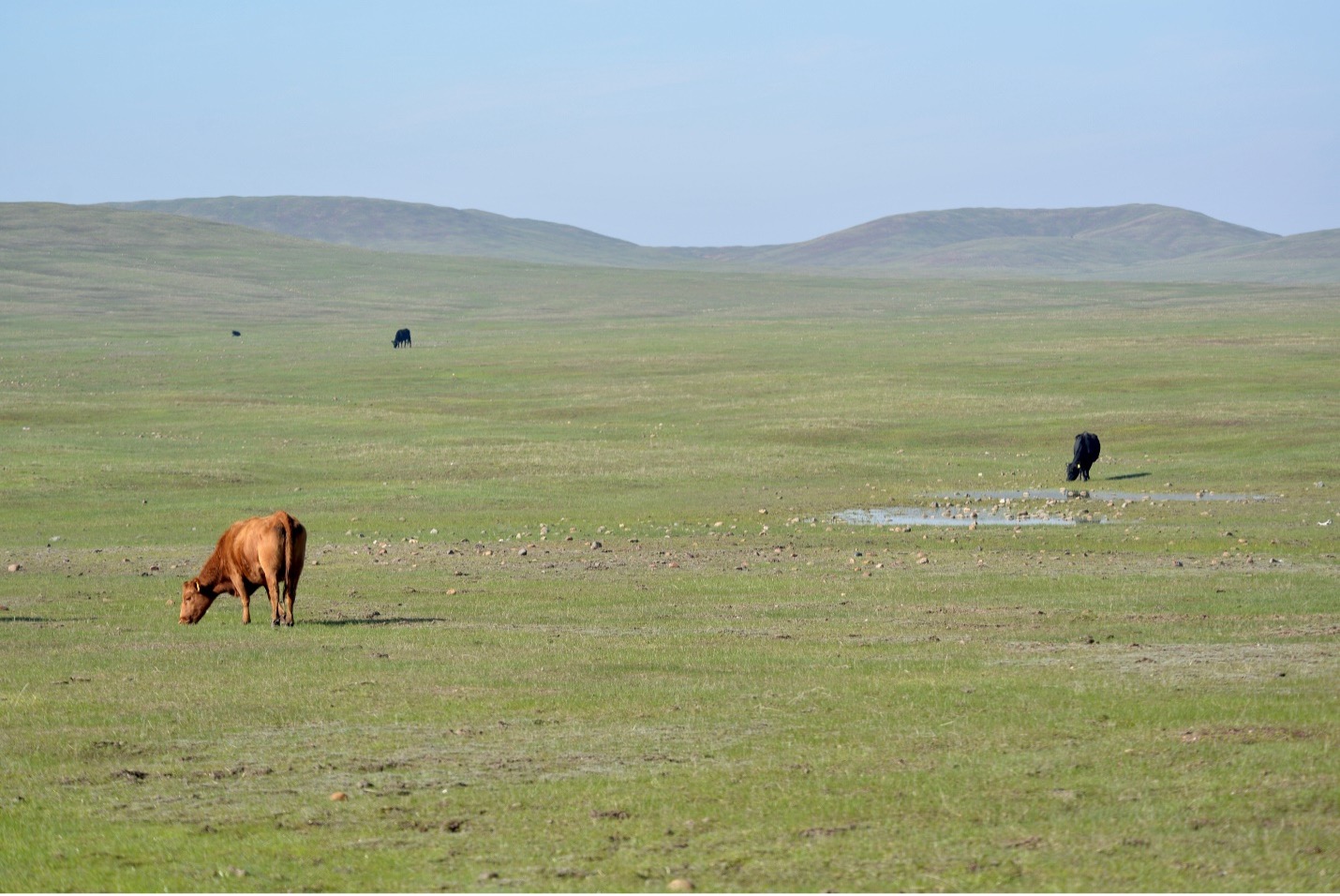The establishment of the University of California, Merced (UC Merced) campus resulted in impacts to jurisdictional wetlands, vernal pool-grassland habitat, and associated state and federally listed plant, invertebrate, and wildlife species. The University compensated for these impacts by protecting nearly 27,000 acres of vernal pool-grassland habitat, including the approximately 6,500-acre Merced Vernal Pools and Grassland Reserve. In 2008, a Long-Term Management Plan was prepared by UC Merced to describe the land use policies and management commitments to protect and maintain the conservation values of the reserve. The reserve has since been managed by UC Merced consistent with the 2008 Management Plan and as required by the University’s regulatory permits from the US Fish and Wildlife Service, California Department of Fish and Wildlife, United States Army Corps of Engineers, and the Regional Water Quality Control Board. As of January, 2024, UC Merced is working to update the Long-Term Management Plan based on best available current information.
UC Merced also developed a Long-Term Monitoring Plan for Special-Status Species on the reserve. The plan was prepared to address the requirement for a detailed monitoring protocol for selected special-status species occurring on the reserve, as documented in Chapter 6, Monitoring and Reporting, of the Long-Term Management Plan. The primary target species for conservation, as identified in the Management Plan, include the following special-status species:
-
Colusa grass (Neostapfia colusana)
-
San Joaquin Valley Orcutt grass (Orcuttia inaequalis)
-
Succulent owl’s-clover (Castilleja campestris ssp. succulenta)
-
Conservancy fairy shrimp (Branchinecta conservatio)
-
Vernal pool fairy shrimp (Branchinecta lynchi)
-
Midvalley fairy shrimp (Branchinecta mesovallensis)
-
Vernal pool tadpole shrimp (Lepidurus packardi)
-
California tiger salamander (Ambystoma californiense)
-
San Joaquin kit fox (Vulpes macrotis mutica)
In addition to management and monitoring activities described in the Long-Term Management Plan and Long-Term Monitoring Plan for Special-Status Species, a few ongoing management and monitoring projects occurring recently on the reserve are briefly described below.
American Kestrel Breeding Productivity
 In the Spring of 2014, the Merced Vernal Pools and Grassland Reserve initiated a conservation project to support American Kestrel (Falco sparverius) nesting populations in the reserve and to monitor their breeding success. Kestrels are small falcons found across North America and are common nesting birds in eastern Merced County. Since American Kestrels are obligate cavity nesters, the reserve and UC Merced community (undergraduate students) worked together in 2014 to install 10 wooden nest boxes mounted on poles. An additional 20 nest boxes were installed in 2015. Currently, there are 30 nest boxes throughout the reserve that are maintained/cleaned annually and an almost 10-year dataset on nest box occupation, which can be provided upon request. Please email mvpgr@ucmerced.edu for more information.
In the Spring of 2014, the Merced Vernal Pools and Grassland Reserve initiated a conservation project to support American Kestrel (Falco sparverius) nesting populations in the reserve and to monitor their breeding success. Kestrels are small falcons found across North America and are common nesting birds in eastern Merced County. Since American Kestrels are obligate cavity nesters, the reserve and UC Merced community (undergraduate students) worked together in 2014 to install 10 wooden nest boxes mounted on poles. An additional 20 nest boxes were installed in 2015. Currently, there are 30 nest boxes throughout the reserve that are maintained/cleaned annually and an almost 10-year dataset on nest box occupation, which can be provided upon request. Please email mvpgr@ucmerced.edu for more information.
Photo credits: Joy Baccei
San Joaquin Kit Fox Monitoring
 The Merced Vernal Pools and Grassland Reserve has an active San Joaquin kit fox monitoring program. The San Joaquin kit fox (Vulpes macrotis mutica), pictured above, is a small, tan fox that is historically found in the San Joaquin region of California. Due to loss of habitat from conversion of land to agriculture and urbanization, this species was federally listed as endangered in 1967. The conserved reserve lands include potentially suitable habitat for kit fox, which has been managed to improve habitat suitability. The reserve has 8 artificial kit fox dens -- 4 escape dens and 4 chambered dens -- as well as a kit fox crossing bridge established in 2012 to help mitigate the impacts of the development of the UC Merced campus. Seven kit foxes were identified between 1999-2002 near the Conservation Lands of the reserve (EIP 2002).
The Merced Vernal Pools and Grassland Reserve has an active San Joaquin kit fox monitoring program. The San Joaquin kit fox (Vulpes macrotis mutica), pictured above, is a small, tan fox that is historically found in the San Joaquin region of California. Due to loss of habitat from conversion of land to agriculture and urbanization, this species was federally listed as endangered in 1967. The conserved reserve lands include potentially suitable habitat for kit fox, which has been managed to improve habitat suitability. The reserve has 8 artificial kit fox dens -- 4 escape dens and 4 chambered dens -- as well as a kit fox crossing bridge established in 2012 to help mitigate the impacts of the development of the UC Merced campus. Seven kit foxes were identified between 1999-2002 near the Conservation Lands of the reserve (EIP 2002).
The Habitat Protection and Enhancement Program and guidelines described in the Management Plan for Conservation Lands and the Adjacent Campus Buildout Lands for the University of California, Merced (Airola 2008) requires annual kit fox camera survey efforts and regular monitoring of artificial dens on the reserve. The reserve has had an active monitoring program since 2015 that employs motion-triggered camera traps. The camera traps monitor use of the kit fox dens as well as potential presence of kit fox prey and predators. Cameras have not detected the presence of kit fox on the reserve, nor have any reserve users reported incidentally observing kit foxes on the reserve. However, kit fox prey, including Merced Kangaroo Rat (Dipodomys heermanni dixoni), has been regularly documented using reserve lands. Please email mvpgr@ucmerced.edu for more information.
Photo creds: Sierra Montes (camera trap) and U.S. Fish and Wildlife Service (SJKF)
Community Science Bird Surveys

Merced Vernal Pools and Grassland Reserve staff collaborate with the National Audubon Society to host an annual Christmas Bird Count. The Christmas Bird Count is an annual census of birds, conducted by volunteer birdwatchers and citizen scientists, and is often claimed as the longest-running citizen science survey in the world. This annual snapshot of bird populations gives reserve managers valuable information about bird diversity and abundance both on the reserve and adjacent properties.
Additional bird diversity and abundance data are collected during focused surveys and opportunistically by reserve managers, citizen scientists, and reserve users with birding experience. These surveys occur throughout the year, but most often in spring, and document diversity of species on the reserve, abundances, and reproductive status (e.g., pairing or nesting, nest with eggs, fledging, etc.).
Photo credits: Joy Baccei
Reserve Cattle Grazing & Residual Dry Matter Monitoring
 Overview
Overview
Seasonal cattle grazing is conducted on the reserve to manage vegetation. The primary environmental purpose for cattle grazing on the reserve is to prevent pervasive, non-native grasses from overtaking the thousands of rare and protected vernal pools found there. Without grazing, excessive grass growth can lead to thatch (phytomass) build up in pools; reduction of rare, endemic wetland plants via competition; reduced hydroperiod; and overall degradation of the aquatic environment. Residual dry matter (RDM) is annually monitored as an indicator of forage utilization and rangeland health. RDM results help reserve managers coordinate proper stocking rates with the cattle grazer.
Management
Cattle grazing helps maintain the ecological health of the vernal pools by limiting the spread of non-native, European grasses and forbs into and around the vernal pools (Barry 1998, Robbins and Vollmar 2002, Marty 2005, Pyke and Marty 2005, Swiecki and Bernhardt 2008, Alvarez 2011). The growth of exotic plants into the vernal pools leads to high rates of evapotranspiration, which dries the soil and reduces the number of days that pools are inundated (i.e., hydroperiod). Adequate grazing also prevents the living and dead undecomposed plant matter (phytomass or “thatch”) from accumulating in pools. Excessive thatch can lead to aquatic environment degradation and eutrophication. Although cattle grazing is considered necessary on the reserve, prudent environmental stewardship requires monitoring to ensure proper grazing levels.
Monitoring
RDM surveys are annually conducted on the reserve in autumn to assess results of the previous grazing season. RDM refers to the non-living, dried grasses and low forbs that remain standing before the beginning of a new growing season. RDM measurements involve clipping dried vegetation within a small quadrat, weighing the sample, and calculating the pounds per acre of standing dried plants. Rangeland resource managers use this standard field technique to monitor and assess grazing intensity throughout the West (Heady 1956, Heady 1965, Bartolome et al. 2006). Appropriate RDM levels for a grassland help to maximize productivity in subsequent years, reduce erosion, maintain a favorable microclimate for seed germination, and reduce loss of nutrients. RDM is also useful for predicting future forage production and plant species composition. RDM measurements help reserve staff assess grassland cattle grazing in order to maintain healthy vernal pools (and their associated listed plants and animals) and to comply with requirements and guidelines in the reserve’s Management Plan (Airola 2008). The Management Plan states that “long-term monitoring is required to assess the effectiveness of management actions and to provide feedback information for adaptive grazing management. The primary management assumption is that the removal of annual grass thatch and control of invasive weeds through managed grazing will maintain the populations of native biological resources on the site within a natural range of variability.”


